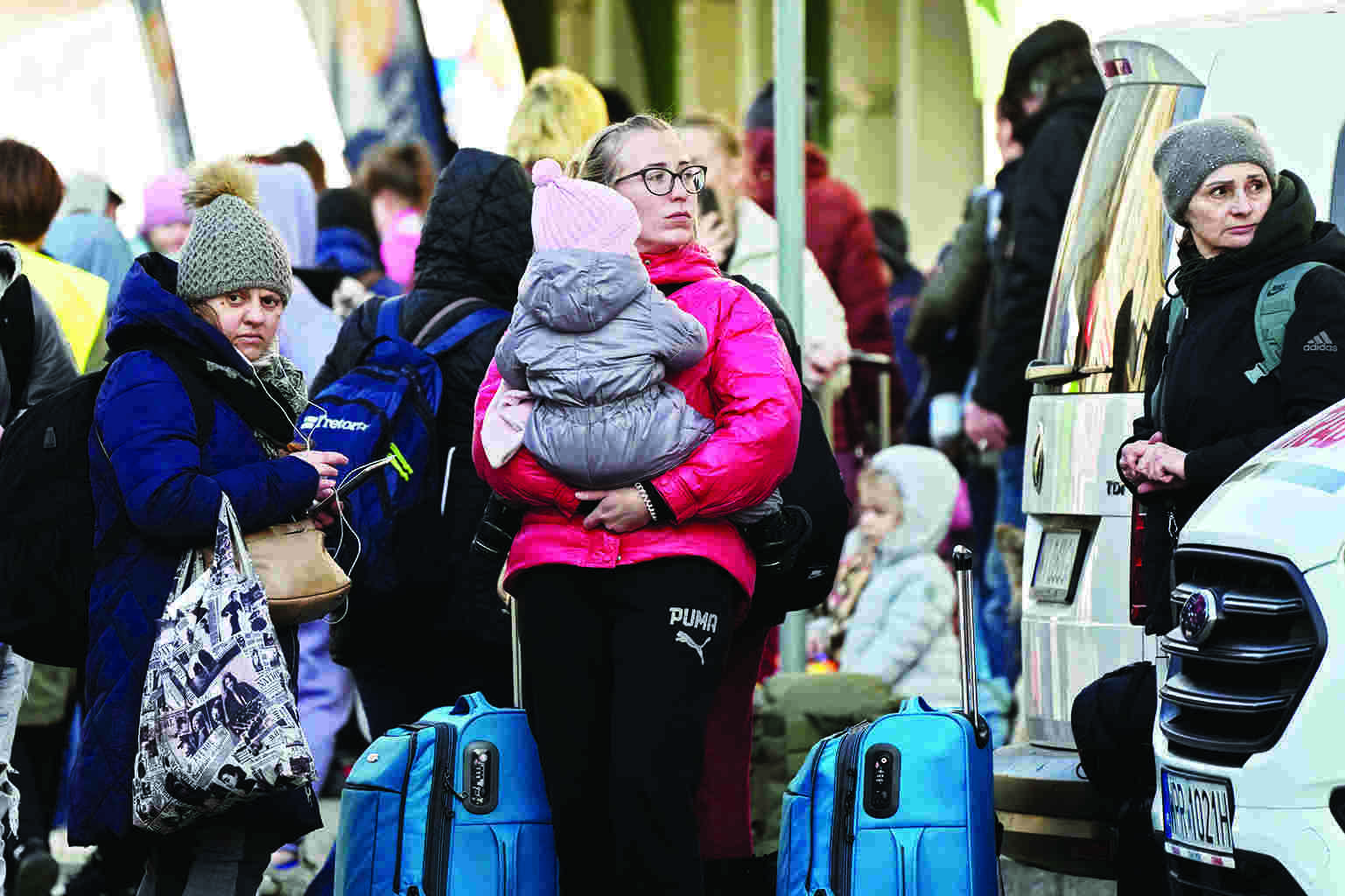Russian war in Ukraine marks 1 month with no end in sight

Moscow: Russia's war in Ukraine since February 24 has killed thousands of people, reduced entire cities to rubble and forced millions to flee their homes.
The largest military conflict in Europe since World War II has also upset the international security order and sent dangerous ripples through the global economy.
A look at pivotal moments of the conflict, a month later:
THE ROAD TO WAR
A buildup of Russian troops near Ukraine in early 2021 raised fears of an offensive.
Moscow withdrew some of the forces in April, paving the way for a June summit between President Joe Biden and Russian President Vladimir Putin. Their meeting, however, failed to meaningfully ease Russia-US tensions.
A renewed buildup of Russian troops along Ukrainian borders began in late October and reached an estimated 150,000 troops by the year's end.
From the beginning of the troop surge, Moscow denied any plans to attack Ukraine, calling such Western concerns part of a campaign to discredit Russia.
At the same time, it urged the US and its allies to keep Ukraine from joining NATO and roll back the alliance forces from Eastern Europe, demands the West rejected as non-starters.
Putin on February 21 this year abruptly upped the ante, recognising the independence of pro-Russia rebel regions in eastern Ukraine.
INVASION BEGINS
In a televised address on February 24, Putin announced the launch of a special military operation intended to demilitarise Ukraine and uproot alleged neo-Nazi nationalists".
As he spoke, the Russian military unleashed a series of air raids and missile strikes on Ukraine's military facilities and key infrastructure.
Russian troops rolled into Ukraine from Crimea in the south, all along the eastern border and from Moscow's ally Belarus, which borders Ukraine from the north.
Putin argued that Russia had no choice but to act after Washington and its allies ignored its demand for security guarantees. Western leaders dismissed the claims as a false pretext for the attack. The Russian military advanced on the Ukrainian capital Kyiv, located just 75 kilometres south of the border with Belarus, closed in on Ukraine's second-largest city of Kharkiv in the east and pushed along the Sea of Azov and Black Sea coasts in the south.
While Russia claimed it was only targeting military facilities, air raids and artillery strikes hit residential areas, schools and hospitals across Ukraine.
The assault turned particularly deadly in March, with a Russian rocket hitting the regional administration building in Kharkiv on March 1, killing 24 people.
On March 9, a Russian airstrike devastated a maternity hospital in the besieged port of Mariupol, killing at least three and injuring 17. A Russian bomb on March 16 flattened a historic theatre in Mariupol, even after Ukrainians had scrawled the word "children" in huge white letters on the pavement next to it to indicate that civilians were sheltering inside.
Officials said hundreds of people who were hiding in the basement survived.
At least eight people were killed in a Russian airstrike on a shopping mall in Kyiv on Monday. Russia's top objective in the south is Mariupol, a strategic port on the Sea of Azov that has been under siege for weeks.
RUSSIA STUNG BY WESTERN SANCTIONS
Western allies quickly responded to the invasion with unprecedented economic and financial sanctions.
Several waves of crippling penalties froze an estimated half of Russia's USD640 billion hard-currency reserves, cut key Russian banks out of the SWIFT financial messaging system, barred Moscow from getting cash in dollars and euros and targeted broad sectors of the Russian economy with rigid trade restrictions.



